The Daily Diary of a Wandering Restaurateur
Here Comes the Sun
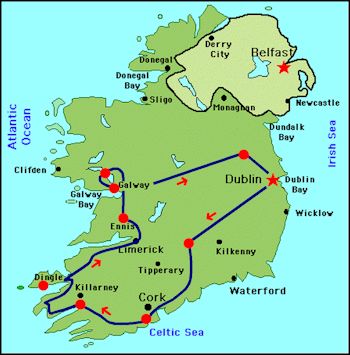 The forecast predicted today would be overcast with scattered showers, but to the surprise of all, the sun was shining.
Some low clouds threatened around the edges from time to time but they seemed to dissolve before they got to us. Was that
divine intervention? Clean living and self-denial? Dumb luck? Who cares? Such seems to be the wonder of life in Ireland.
The forecast predicted today would be overcast with scattered showers, but to the surprise of all, the sun was shining.
Some low clouds threatened around the edges from time to time but they seemed to dissolve before they got to us. Was that
divine intervention? Clean living and self-denial? Dumb luck? Who cares? Such seems to be the wonder of life in Ireland.
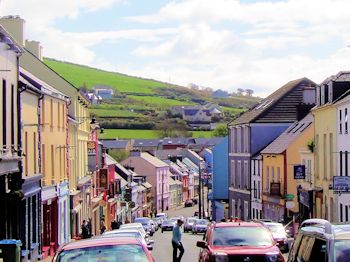
I've seen the view down Main Street a lot. What I noticed today for the first time were the
brilliant green fields at the end of town ... perhaps something to do with it being a sunny day? We leave Dingle on Tuesday,
so we're now in the mode of weighing what we want to see and do and figuring when we hope to fit it in. Rationing time in a
way. This is when our time in town takes on a slightly more project-like tone. This is not a bad thing, just slightly less
spontaneous.
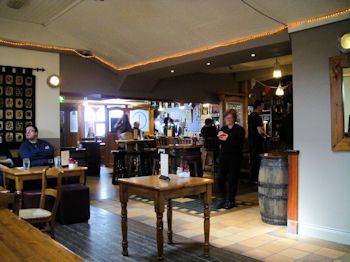
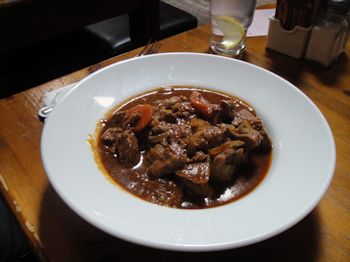
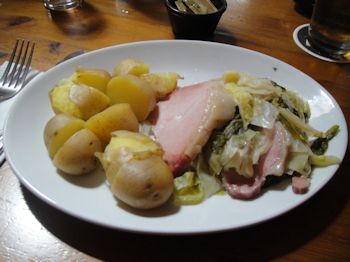
In typical fashion -- at least when we have our own lodgings and can eat breakfast whenever it
strikes us -- the first order of business for the day was lunch! Many of the restaurants were closed when we went in search
of sustenance, but we wandered a bit and found Geaney's Bar which was not only open (a good start!) but had an interesting
menu that was comparatively reasonable priced. It seems there is no cheap food in Ireland (certainly not in Dingle!) short
of stocking up on picnic supplies at the local grocery. The day was sunny but not yet picnic weather, so we were pleased
to make our lunch a beef and Guiness stew and the Irish classic, cabbage and bacon.
If you tend to think of corned beef and cabbage as typical Irish ... don't. It is, in fact, an American creation. The real
Irish dish is cabbage and bacon. In this case, "bacon" is more like braised pork loin. What the dish lacks in color and
contrast it more than makes up for in taste. If you're ever in Syracuse, NY, you can get the real deal at Kitty Hoynes
Irish Pub ... and tell David I sent you.
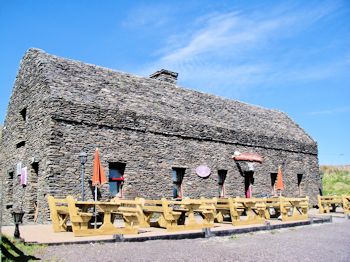
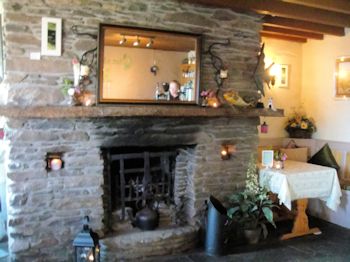
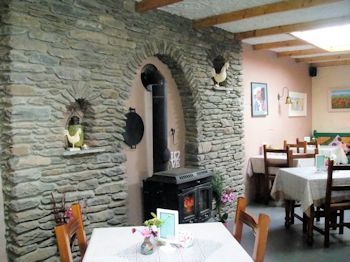
What else do you do on a sunny day in Ireland but drive around and see the sights? The Dingle
Peninsula holds evidence of civilization as far back as the Stone Age. History demonstrates that you build with whatever
materials are most readily at hand. In 2000 BC in this part of the world, that was flat stones. I have a few examples of
that below ... but building dwellings with stone didn't die out with the ancient cultures. Our first stop of the afternoon
showed what can be done if you apply an old practice to modern times. The Stonehouse Restaurant was built about ten years
ago and seemed like a good spot to stop for the afternoon coffee and sweets.
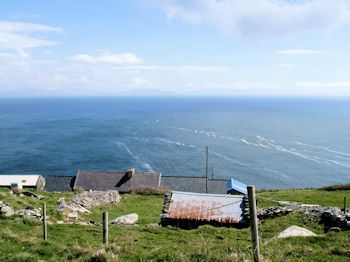
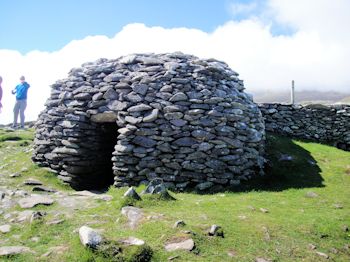
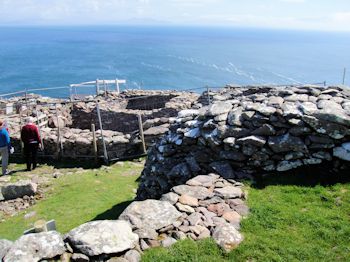
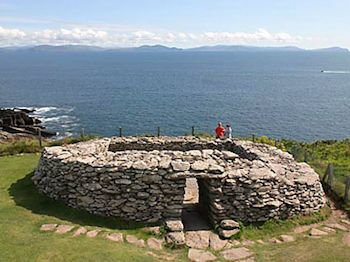
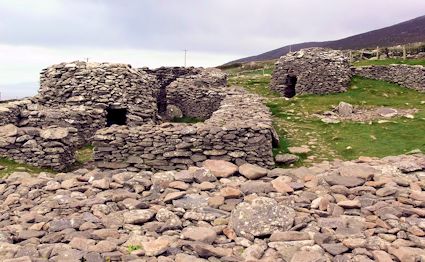
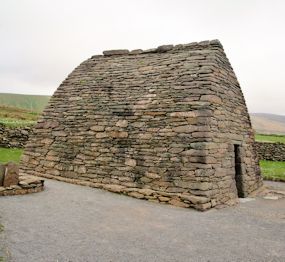
Ancient stone construction is in evidence everywhere on the Dingle Peninsula. The first five
photos are from the immediate area around the Stonehouse. The beehive house is from 2000 BC or so. It is made of loose-stacked
stone and is just high enough to stand in. It is one of several buildings located inside a defensive wall on a windswept
hill overlooking the Atlantic Ocean. I have to wonder what the inhabitants of the time were thinking as they stared out
to the horizon. Probably what we may ponder as we stare out into a starry sky.
The first two lower photos are of
Dunbeg Fort, an Iron Age ring fort along with defensive ramparts and ditches. Despite being some of Ireland's most important
relics, they are doomed. The gradual erosion of the cliff will eventually send all this tumbling into the sea. The last
shot is newer (7th century) and larger (for scale, the doorway is just under six feet high). This is the Gallarus Oratory, a stacked
stone church built by monks escaping the oppression of Europe's Dark Ages. It might hold a dozen people and is still intact
(and waterproof) after 1300 years.
 [Itinerary Page]
[Itinerary Page]
© 2014 Restaurant Doctor
 The forecast predicted today would be overcast with scattered showers, but to the surprise of all, the sun was shining.
Some low clouds threatened around the edges from time to time but they seemed to dissolve before they got to us. Was that
divine intervention? Clean living and self-denial? Dumb luck? Who cares? Such seems to be the wonder of life in Ireland.
The forecast predicted today would be overcast with scattered showers, but to the surprise of all, the sun was shining.
Some low clouds threatened around the edges from time to time but they seemed to dissolve before they got to us. Was that
divine intervention? Clean living and self-denial? Dumb luck? Who cares? Such seems to be the wonder of life in Ireland.











